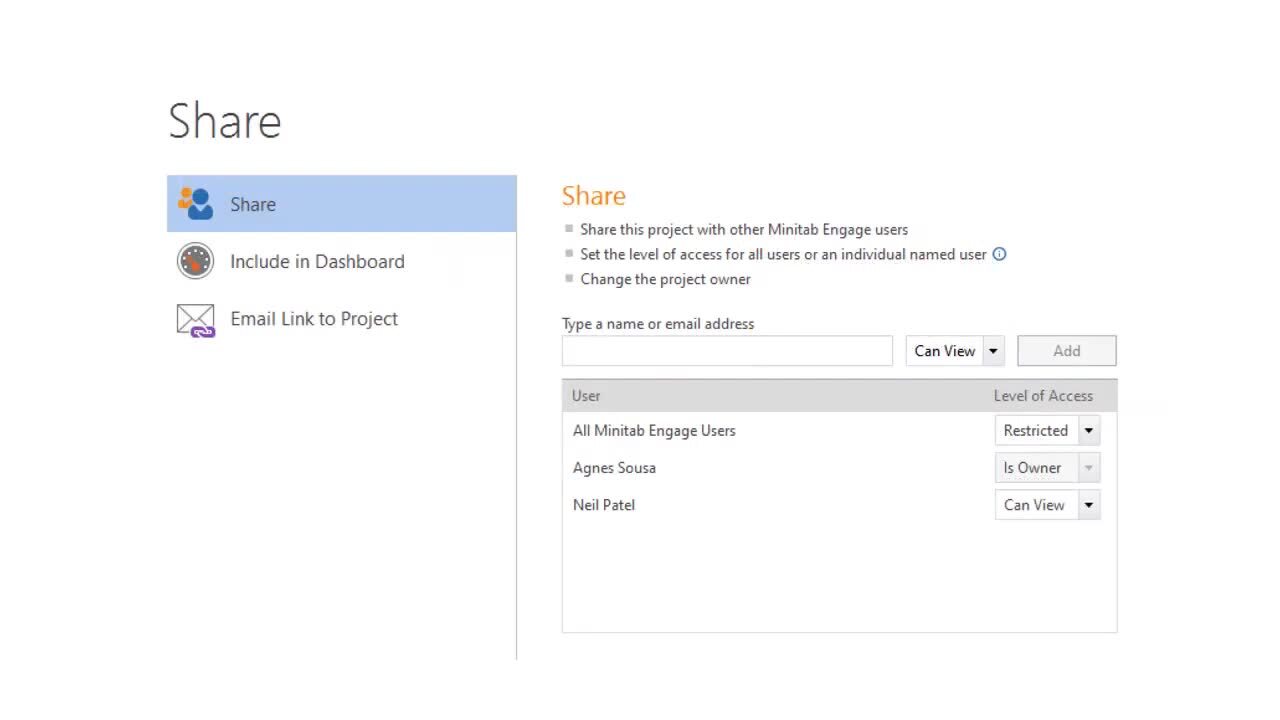Types of filters
- Static filter
- A static filter contains a built-in set of criteria. Users can only apply or remove a static filter to see different results. When you create a static filter, you set conditions for one or more data fields to define the criteria.
- Dynamic filter
- A dynamic filter contains a list of checkbox options. Users can check or uncheck the checkboxes to see different results. When you create a dynamic filter, you can use an existing list field or a set of criteria that you define.
Create a static filter
When you create a static filter, you define the filter criteria by setting conditions for one or more data fields.
- Choose .
-
In edit mode, beside Filters, select the edit button
 .
.
- In the filter editor, select the Static Filter button.
- Enter a name for the filter.
-
Select Select a field, choose a field, then set its condition.
Add as many data fields and conditions as necessary to define the filter. For a list of
filter conditions, see Filter conditions.
- If you select a data field from a single-value category
 , select
Select a condition, then set its condition. Engage uses this criteria to evaluate projects and
return results.
, select
Select a condition, then set its condition. Engage uses this criteria to evaluate projects and
return results. - If you select a data table
 ,
select Add table
criteria, then select the data fields and set conditions. Engage uses this criteria to evaluate each row in
the data table to return results.
,
select Add table
criteria, then select the data fields and set conditions. Engage uses this criteria to evaluate each row in
the data table to return results.
- If you select a data field from a single-value category
-
Beside
Match Criteria,
choose one of the following options.
- ALL: Performs an AND operation to return the projects that match all the filter criteria.
- ANY: Performs an OR operation to return the projects that match any of the filter criteria.
Create a dynamic filter
The dashboard has two types of dynamic filters. One type uses an existing list of values in a data field and one uses a set of criteria that you define.
Note
The My Projects and the My Tasks filters are dynamic default filters that help you find projects and tasks that you own or that are shared with you. You cannot edit or delete these default filters, but you can apply them or remove them. You can also select different options within the filters to affect the report results.
Use an existing list of values
To create a dynamic filter that uses an existing list of values, you must select a list field. The values in the list field become the filter options that users can select in the dashboard report.
- Choose .
-
In edit mode, beside Filters, select the edit button
 .
.
- In the filter editor, select the Dynamic Filter button.
- Enter a name for the filter.
-
From
Field,
select the drop-down list
 , then select a list field.
, then select a list field.
- To make a value the default selection when a user applies the filter, select the checkbox beside it.
-
To reorder the list of values, select the row's gripper
 and
drag the row to a new location.
and
drag the row to a new location.
Use a set of criteria that you define
To create a dynamic filter that uses a set of criteria that you define, you must select a single-value data field, then enter the criteria. The criteria you enter becomes the filter options that users can select in the dashboard report.
- Choose .
-
In edit mode, beside Filters, select the edit button
 .
.
- In the filter editor, select the Dynamic Filter button.
- Enter a name for the filter.
-
From
Field,
select the drop-down list
 , then select a single-value
data field.
, then select a single-value
data field.
- Select Select a condition, enter a value for the condition, and enter a name to display for the filter option. Add as many data fields and conditions as necessary to define the filter. For a list of filter conditions, see Filter conditions.
- To make a value the default selection when a user applies the filter, select the checkbox beside it.
-
To reorder the criteria, select the row's gripper
 and drag the row to a new location.
and drag the row to a new location.
Watch a video
Watch a video to learn more about filters.

